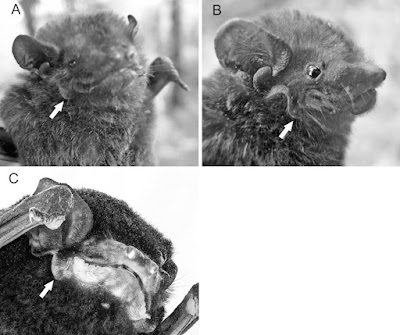[Most Recent Entries] [Calendar View]
Wednesday, August 7th, 2024
| Time | Event | ||||||
| 11:05a | [Botany • 2024] Cyclamen brulloi (Primulaceae) • A New Species from Sicily (Italy)
Summary A new species, Cyclamen brulloi, is described and illustrated from Sicily (Italy). This is an Autumn flowering species belonging to Cyclamen subg. Cyclamen and it is currently restricted to some localities of western Sicily, where it grows on carbonatic rocks and in rocky crevices. This taxon shows close relationships both with C. hederifolium and C. africanum. However, several morphological and karyological features are clearly different. Morphology, pollen grain micromorphology, karyology (2n = 4x = 68), ecology, conservation status and taxonomic relationships of the new taxon with the most allied species are presented. Key Words: chromosome, endemic, karyomorphometry, Mediterranean flora, Myrsinoideae, pollen, taxonomy
Cyclamen brulloi Cambria, Giusso, Minissale, Tavilla & Salmeri, sp. nov. Etymology. The specific epithet is given in honour of Salvatore Brullo, active botanist of Catania University and specialist in the taxonomy of many genera of the Mediterranean flora, to whom the authors express their strong gratitude for his fundamental teachings and suggestions in botanical studies. S. Cambria, G. Giusso del Galdo, P. Minissale, G. Tavilla and C. Salmeri. 2024. Cyclamen brulloi (Primulaceae), A New Species from Sicily (Italy). Kew Bulletin. DOI: doi.org/10.1007/s12225-024-10207-2 | ||||||
| 4:57p | [Mammalogy • 204] Chalinolobus orarius • A New Species of Lobe-lipped Bat Genus Chalinolobus (Chiroptera: Vespertilionidae) from southern Papua New Guinea Abstract The Hoary Bat Chalinolobus nigrogriseus is the only species of the genus known from the island of New Guinea. A new species of Chalinolobus from Papua New Guinea is described based on DNA sequence and morphological criteria using material previously assigned to C. nigrogriseus. The new species most resembles the eastern Australian subspecies of the Hoary Bat C. n. nigrogriseus in general size and appearance but is easily distinguished by an enlarged, rather than rudimentary lobe at the terminal outer ear margin. The new species might also be confused on external characters with smaller individuals of Australian Gould’s Wattle Bat C. gouldii, from which it differs in having bifid first upper incisors and uniform dark dorsal fur. The inclusion of C. nigrogriseus in the bat fauna of New Guinea is now in doubt, pending a re-assessment of the identity of Chalinolobus specimens in world museum collections. Locality records of all Chalinolobus spp. from Papua New Guinea are reviewed. Most localities are below 60 m elevation in coastal savannah and woodlands. The identity of specimens of C. nigrogriseus and C. gouldii from northern Australia should be reviewed to determine whether the new species also occurs in Australia. Mammalia, Chalinolobus nigrogriseus, Chalinolobus gouldii, Trans-Fly, savannah, woodland, taxonomy, morphology, genetics
Chalinolobus orarius sp. nov. Diagnosis. Distinguished from all other species of Chalinolobus by the combination of an enlarged ear margin which terminates as a lobe near the angle of the mouth (Fig. 8), and the presence of a secondary cusp on I1 (Fig. 9). Further differentiated by DNA sequence divergence of at least 6.7% in the mtDNA COI gene from other sampled Chalinolobus species. Distinguished from Australian C. gouldii gouldii, C. gouldii venatoris and Norfolk Island C. cf. gouldii, the only other Chalinolobus in which the enlarged ear terminal lobe is present, by smaller mean body size, e.g. mean FA = 37.24 mm (n = 8 females) vs. northern Australian C. gouldii 40.97 mm (n = 66 females) (Table 4). Northern Australian C. gouldii (north of latitude 20° S) of equivalent forearm length to C. orarius sp. nov. tend to have larger skulls, e.g. CON typically greater than 12.9 mm, C1–C1 usually greater than 4.8 mm and CM3 greater than 5.0 mm (Table 3). Etymology. Derived from the Greek adjective oraria meaning “of the coast”, a reference to the species distribution in the coastal and subcoastal eucalypt savannahs of southern New Guinea. Common name. Coastal Lobe-lipped Bat is suggested as a vernacular name for this species. Harry E. Parnaby, Andrew G. King, Steve Hamilton and Mark D.B. Eldridge. 2024. A New Species of Lobe-lipped Bat (Chalinolobus: Vespertilionidae) from southern Papua New Guinea. Zootaxa. 5492(3); 301-324. DOI: doi.org/10.11646/zootaxa.5492.3.1 |
| << Previous Day |
2024/08/07 [Calendar] |
Next Day >> |






